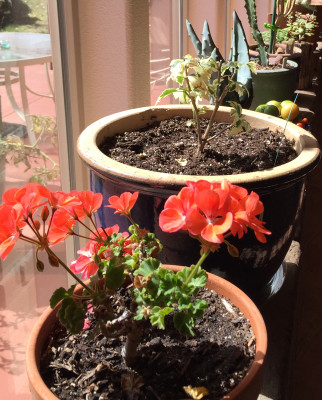Gardening Tasks For Late Fall
Dec 10, 2020
As fall temperatures drop, there’s still plenty to do in the garden. In most areas, freezing temperatures start to hit in September or October. But there are still plenty of sunny days hit in fall, so gardeners can get outside and take care of these chores before winter arrives.
1. Harvest
If you still have any vegetables ripening, better harvest them now. Tomatoes and winter squashes can finish ripening inside. If you haven’t harvested and dried herbs, now is the time to trim them back and get them ready for use in the kitchen. Some vegetables, such as kale and carrots, can stay in the ground a while. You can preserve some vegetables with help from extension office publications or other credible sources that address flavor and safety of canned or frozen foods. Pick flowers still blooming and place them in a vase inside, just to make you feel better about the season ending.
2. Clean
There is some debate about what to leave in the garden and what to throw out. You definitely want to throw out any weeds or diseased plant cuttings. Compost healthy cuttings. It's personal preference to leave some debris on the ground to naturally compost in place. But if the debris hides unwanted bugs or spores, it’s not a good idea. Try cleaning up most plant debris and then use straw or leaves for composting.
3. Preserve Bulbs and Seeds
Typically you can leave iris, daylily and allium bulbs or corms and should dig up gladiolus and dahlias. Usually, the bulbs just need to be kept cool and dry. You also can preserve seeds from flowers and herbs such as dill or cilantro for cooking or replanting.
4. Leave Some Seeds
Not all flowering plants need fall trimming of spent seed heads. Many can make it through winter and wait for summer trims. And birds love dried up seeds on sunflowers, cosmos and other flowering annuals. Plus, by leaving the seeds on, you increase the chance that some native grasses or flowers will reseed.
5. Evaluate Plant Placement
As you clean up and assess how plants look at the end of their growing season, you can evaluate plant placement. Some plants might have grown too large for their spot or get too much water from runoff. Take some notes and consult local sources so you still have time to decide whether you can move them this fall. Or plan where they’ll go in spring, especially before buying new plants!
6. Mulch
Mulch for two reasons: to conserve water and cool roots in summer and to warm roots during cold winter. Typically mulch as part of fall cleanup and near the time of the first freeze. Most plants that are native and appropriate for your garden can get by without mulch, but it helps protect tender plants from hard freezes in winter. Mulching needs to be a few inches thick to insulate and to cut down on weeds.
7. Protect Plants
In addition to mulching, you can put buckets around plants to help keep them warm, especially in winter wind, or to keep deer from destroying them (adding a “lid” made of chicken wire or similar material that lets in sun and moisture but not curious critters). Plants in containers that are tender or annual in your area need to come inside, Move outside containers against a south-facing wall for warmth and to protect against wind.
8. Empty Containers
It’s time to empty all those containers with edibles and annuals that are dying back. You’ll need fresh potting soil next year and it’s better to store containers empty. Empty soil from your containers (unless the plant had a disease) into garden beds and large stock tank containers that need soil. You can also save potting mix in plastic sealed containers, but it should be mixed with fresh potting soil and compost when replanted in the spring.
9. Amend Soil
If you have new garden beds or some that need better soil, fall is a good time to improve soil health. Adding some compost gives it a chance to break down, as does covering beds with leaves that fall from trees. And it makes the spring preparation easier. There are many ways to amend bad soil, such as planting cover crops before frost or having a soil test so you know how to better balance pH in your growing beds. But gardeners learn to tell when soil is compacted. It’s hard to go wrong adding a little organic matter in fall.
10. Enjoy Time Outside!
Fall is a favorite season for a reason. Cool nights and warm days make it hard to stay inside, even when there are few chores to do. And enjoying even the final flower blooms before frost arrives is part of the reason you work hard to make your lawn and garden look nice. Soak it all in and dream about spring, when you will feel renewed energy and enthusiasm for garden chores.

|
Author Teresa Odle - Published 12-10-2020 |
//

